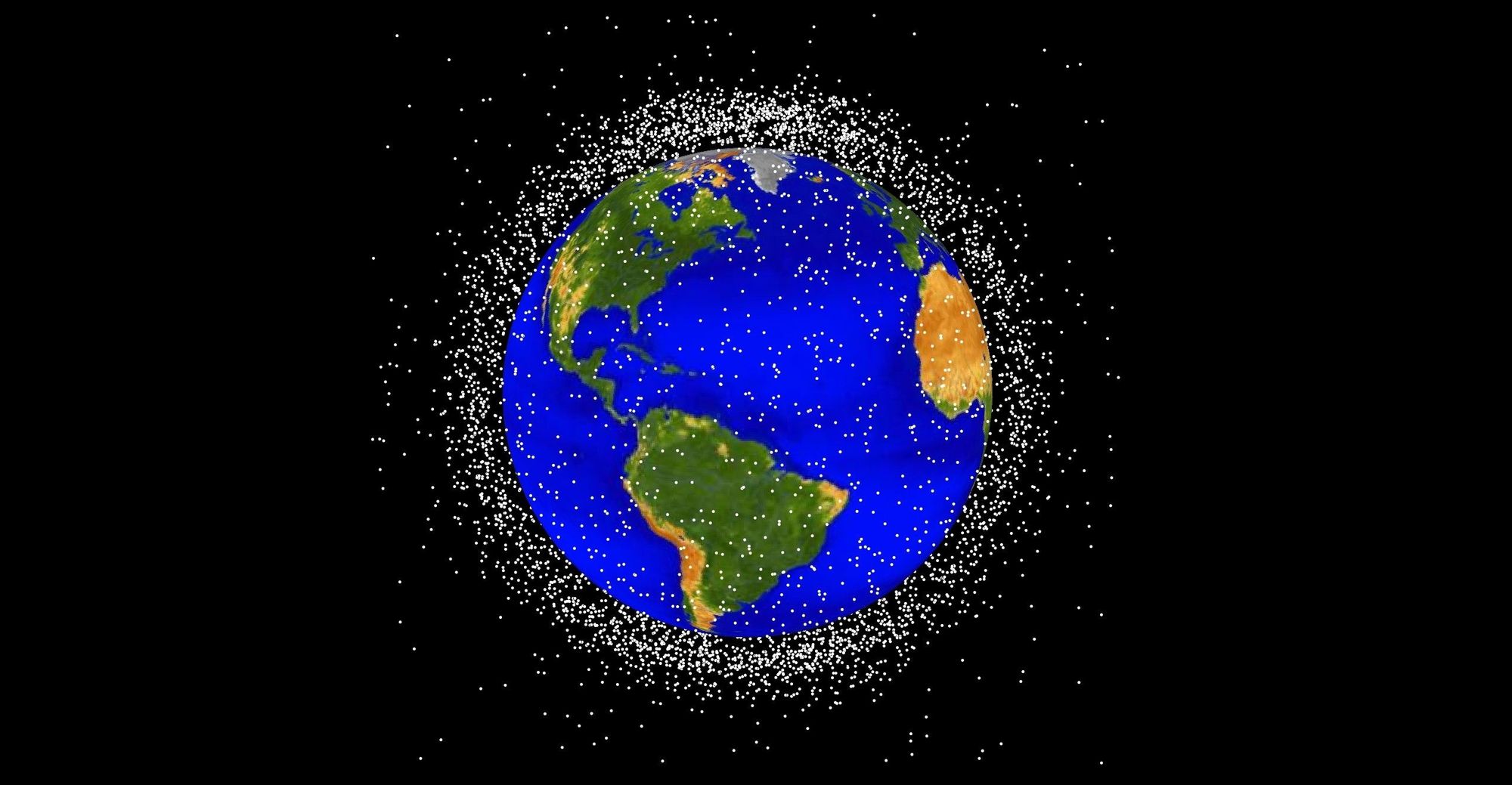
🛰️ ESA buys a pioneering debris removal mission from Swiss start-up ClearSpace
The European Space Agency (ESA) yesterday signed a contract worth 86 million Euros to purchase a mission to remove a space junk object from orbit. Scheduled for 2025, this would be the first such mission in the world.
Share this story!
Space debris is the biggest security concern in orbit. The more satellites we launch into space, especially into low-Earth orbit, the more the risk for collisions increases. Several innovative ideas are being developed for tackling the space junk problem by removing debris items from orbit in the long-term.
In 2025, the plan is for the Swiss start-up company ClearSpace SA to launch a space debris removal spacecraft called ClearSpace-1. The spacecraft will make a close approach with an old rocket part from a European Vega rocket and capture it using four robotic arms. This particular rocket part – a Vega Secondary Payload Adapter (“Vespa”) – has been chosen as the mission target due to its mass, size and shape. With its 112 kg mass and a size similar to a microsatellite as well as thanks to its conical shape and a sturdy design that’s hard to break when ClearSpace-1 touches it, it makes a perfect first target.
This mission will be carried out as a service for ESA, and ESA will supervise part of the mission. The mission is very special, because it will be the first space mission of its kind ever to be carried out (unless somebody else suddenly announces that they plan to do the same before 2025, of course).
ESA announced the purchase of the mission in a press release yesterday. The agency also stated their plan to buy more services from commercial companies in the future. As stated by ESA in the press release: “Paying for such a service contract rather than directly procuring and running the entire mission represents a new way for ESA to do business – intended as the first step in establishing a new commercial sector in space.” This is similar to what NASA is doing to boost the American commercial space sector, where the most well-known example by now is the purchase of crewed space flights from SpaceX.
According to the ESA press release, the Vespa target wasn’t just randomly left to fly around in space when it was launched back in 2013. Rather, it was intentionally left in a so-called “gradual disposal orbit” at an altitude between 664 km and 801 km, compliant with space junk mitigation regulations of the time. This disposal orbit is now where ClearSpace-1 will go and pick it up.
Fittingly, ClearSpace-1 will be launched on a Vega rocket. It will first be launched into an orbit at 500 km for testing of mission-critical functionality. It will then perform an orbit raising to the target’s orbit and proceed with the rendezvous approach from there. ESA says it will supervise the capture part of the mission. Once completed, the spacecraft will return down to the Earth’s atmosphere carrying its target with it. Both will burn up in the atmosphere together and the debris removal will be completed.
We are so proud to announce the signature of the service contract between @esa and @ClearspaceToday to remove a #spacedebris from orbit. This mission will be a world’s first! We’ve been working for years to achieve this day! What a fantastic day!! ❤️🍾🎉🛰🗑👏 pic.twitter.com/TzrGzuqplm
— ESA Clean Space (@ESAcleanspace) December 1, 2020
“[W]ith overall satellite numbers set to grow rapidly in the coming decade, regular removals are becoming essential to keep debris levels under control, to prevent a cascade of collisions that threaten to make the debris problem much worse,” says Jan Wörner, the ESA Director General, quoted in the ESA press release.
“Our ‘tow truck’ design will be available to clear key orbits of debris that might otherwise make them unusable for future missions, eliminating the growing risks and liabilities for their owners, and benefitting the space industry as a whole. Our goal is to build affordable and sustainable in-orbit services”, says ClearSpace CEO Luc Piguet, quoted in the same press release.
According to Luisa Innocenti, the Clean Space Office head of ESA, the “plan is that this pioneering capture forms the foundation of a recurring business case, not just for debris removal by responsible space actors around the globe, but also for in-orbit servicing: these same technologies will also enable in-orbit refuelling and servicing of satellites, extending their working life. Eventually, we envisage this trend extending into in-orbit assembly, manufacturing and recycling.”
Space is becoming filled with debris.
— ESA Operations (@esaoperations) December 1, 2020
Luisa Innocenti, Head of ESA's Clean Space Office explains the world-first mission to remove debris from orbit, Clearspace-1.#SpaceDebris#SpaceCare pic.twitter.com/atlANlcf7i
ClearSpace already began work on the project this summer when given green light to do so through a “Preliminary Authorization to Proceed” contract with ESA.
By becoming a premium supporter, you help in the creation and sharing of fact-based optimistic news all over the world.


